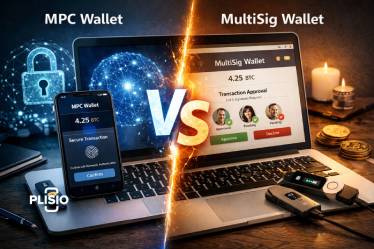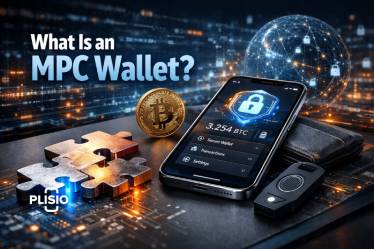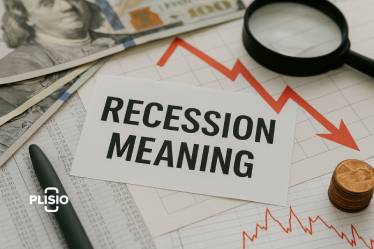A Beginner’s Guide to Rendering and the RENDER Token
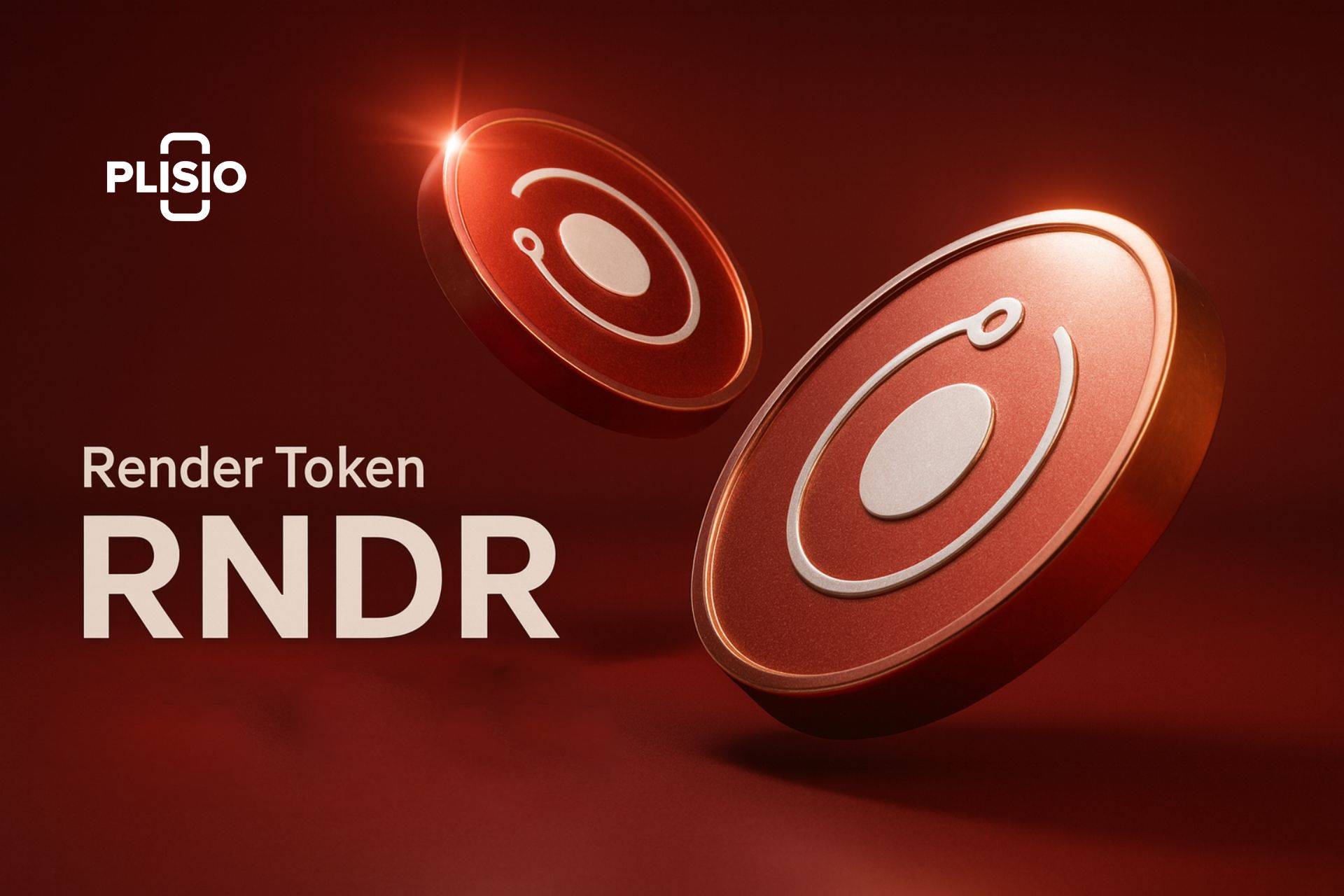
The Render Network is a decentralized, peer-to-peer network of connected graphics processing units (GPUs) built to rent out and monetize idle GPU computing power. Its main focus is digital rendering—powering up 3D environments, animation, virtual reality, and high-quality computer graphics that require serious compute power.
This distributed GPU network transforms idle GPU power into cost-effective rendering solutions. By using Render, digital artists, developers, and content creators get scalable access to GPU computing power that is otherwise sitting unused. Render is used for digital rendering jobs across industries: from 3D content creation to motion graphics to complex animation projects.
Originally created as an ERC-20 token on Ethereum, Render was originally launched as an Ethereum-based solution. But in late 2023, after the Render community voted to implement faster and cheaper scaling, the project migrated to Solana. That shift to Solana gave users faster transactions and lower fees. GPU owners could either keep their ERC-20 token RNDR on Ethereum or move to the new Render token on Solana (an SPL token).
The Render token (RENDER) is a crypto service token used to pay for rendering services, reward GPU providers, and handle transactions across the Render Network. It is the backbone of the system, designed to fuel decentralized rendering services, connect GPU owners and node operators, and reward them when they earn Render tokens for their work.
Platforms like Kraken make it possible to trade RNDR/RENDER alongside more than 250 other cryptocurrencies, though availability depends on your region.
2025 Crypto & Rendering Snapshot
- RENDER price (Aug 2025): ~$3.65 USD
- Market Cap: ~$1.89 billion
- Circulating Supply: ~518.6 million Render tokens
- Daily Trading Volume: ~$80–92 million
- Frames Rendered (July 2025): 1.49 million, up 18% from June
- Burn-and-Mint Equilibrium (BME): ~$207,900 USDC burned in July 2025
- AI Expansion: NVIDIA RTX 5090 GPUs onboarded for AI compute workloads in the U.S.
How the Render Network Works
The Render Network connects idle GPUs to creators who need GPU computing power. Here’s how the render work flows:
- Decentralized GPU Sharing: GPU owners lend unused GPU computing power to a distributed network using blockchain technology for transparent and secure payments.
- Token Economy: Jobs are paid in RENDER tokens. Node operators earn Render tokens for completing rendering jobs, while creators pay for rendering services with tokens purchased from liquidity pools.
- Quality Standards: Before payments are released, outputs are verified to meet high-quality rendering standards.
- Scalable GPU Network: Render can scale on demand, distributing rendering tasks across node operators worldwide.
- Security: All payments and transactions are recorded on the blockchain, while rendering tasks themselves are executed off-chain to save time and compute resources.
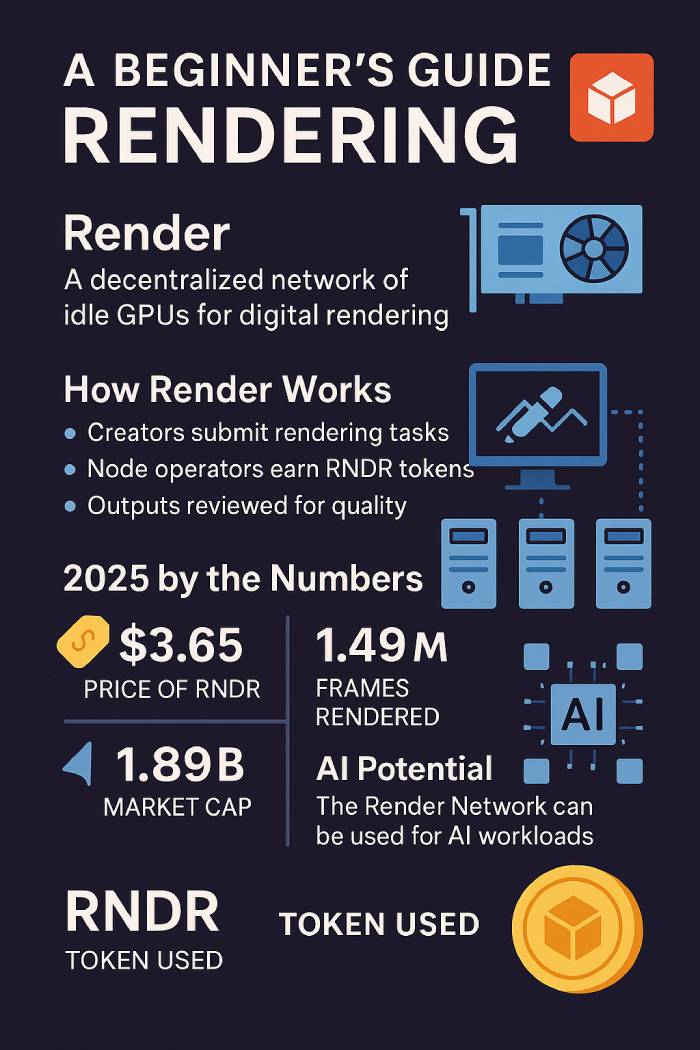
Key Crypto Innovations in Render Work
The Render Network is a matchmaking service between content creators and GPU providers.
Creators submit their rendering jobs, staking tokens according to the demands that jobs will require. They also choose pricing tiers that balance speed, reliability, and cost. Node operators pick up jobs, and once the rendering work is completed, tokens are released. If results fall short, creators can dispute. Payments and transactions are recorded on the blockchain, while rendering tasks remain off-chain for efficiency.
RNDR Token and the Burn-and-Mint Equilibrium (BME)
In January 2023, the Render community voted to implement the Burn-and-Mint Equilibrium mechanism. With this model, 95% of tokens used to pay for rendering tasks are burned, reducing supply, while 5% go to the Render Network Foundation for development. Node operators earn Render tokens newly minted to maintain balance between supply and demand. This equilibrium mechanism helps prevent inflation and can make RENDER become deflationary as usage grows.
2025 Update: In July 2025, over $207,000 worth of USDC was burned, highlighting how active the GPU network has become.
What Problem Does the Render Network Solve?
Traditional rendering is slow, expensive, and limited to those with access to specialized GPU computing. Content creators working on computer graphics, 3D environments, and animation often face long queues and high costs. Render’s decentralised rendering model opens the door to scalable and cost-effective rendering solutions by distributing jobs across a network of idle GPUs.
This allows digital artists and developers to access high-quality rendering power at a fraction of traditional costs. GPU owners benefit too, since they can earn Render tokens by contributing compute power to the network.
Expert Opinion: Analysts at CoinTelegraph Research argue that Render could become the “AWS of GPU computing” because of its rapidly growing network and its expansion into AI. Researcher Sarah Kim notes, “By expanding rendering services to AI compute tasks, Render positions itself as both a creative and AI infrastructure play—doubling its potential impact.”
Why Buy RNDR Token?
Reasons someone might consider holding the Render token include:
- Governance: Participate in protocol decision-making when the Render community votes on new features.
- Staking: Stake RNDR tokens to earn Render rewards while securing the network.
- Transaction Fees: Pay for rendering services and blockchain transactions.
- Form of Payment: Use Render as a cryptocurrency for transferring value across blockchain networks.
Expert View: Market strategist Daniel Alvarez comments, “The RNDR token isn’t just another crypto—it’s a token used to access GPU computing power. As demand for AI and VR increases, RENDER becomes both scarce and valuable.”
Render Network Origin
Render was originally created in June 2020 by Jules Urbach, CEO of OTOY. Urbach is a long-time pioneer in digital rendering, computer graphics, and GPU computing. His vision was to democratize access to high-quality rendering by building a distributed network of connected graphics processing units.
Render Tokenomics and Crypto Growth
Render was originally created as an ERC-20 token on Ethereum with a theoretical maximum supply of approximately 536 million Render tokens. 25% of these were sold to investors in 2017. At present, it’s unclear how many tokens are held by the team and developers.
Introducing the BME in January 2023 showed the Render Network’s goal of becoming deflationary over time. In 2024, the Render community voted to transition to Solana and launch the new Render token. While the Render Network Foundation now focuses on Solana, the ERC-20 token on Ethereum is still live.
2025 Market Note: As of August 2025, Render’s market capitalization is nearly $1.9 billion. The RNDR token continues to grow as adoption expands across AI, VR, and 3D rendering jobs.
Expert Consensus: Most crypto analysts agree that Render’s equilibrium mechanism creates real utility and helps stabilize supply. But the ability of Render to stay competitive depends on whether the Render Network can maintain leadership in AI rendering services while balancing growth with quality standards.

